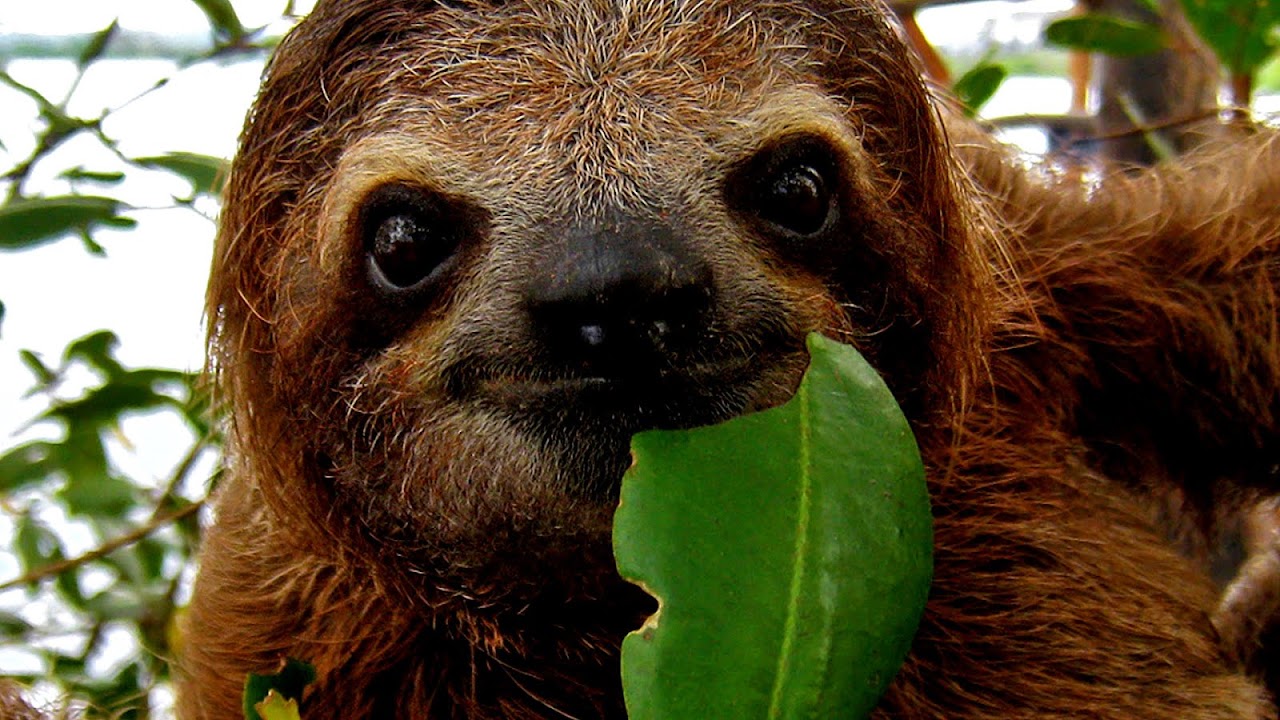
The three-toed sloths are tree-living mammals from South and Central America. They are the only members of the genus Bradypus and the family Bradypodidae. The four living species of three-toed sloths are the brown-throated sloth, the maned sloth, the pale-throated sloth, and the pygmy three-toed sloth.

Maps, Directions, and Place Reviews
Extant Species
Why Is The Three Toed Sloth Endangered Video
Evolution
A study of cytochrome b and 16S rRNA sequences suggests that B. torquatus diverged from B. variegatus and B. tridactylus about 12 million years ago, while the latter two split 5 to 6 million years ago. The diversification of B. variegatus lineages was estimated to have started 4 to 5 million years ago.
Relation to the two-toed sloth
Although similar to the somewhat larger and generally faster-moving two-toed sloths, the two genera are placed in different families. Recent phylogenetic analyses support the morphological data from the 1970s and 1980s that the two genera are not closely related and that each adopted their arboreal lifestyles independently. It is unclear from which ground-dwelling sloth taxa the three-toed sloths evolved or whether they retain their arboreality from the last common ancestor of sloths; the two-toed sloths appear to nest phylogenetically within one of the divisions of ground-dwelling Caribbean megalonychids, thus probably either descended from them or are part of a clade that invaded the Caribbean multiple times. Both types of sloth tend to occupy the same forests; in most areas, a particular species of three-toed sloth and a single species of the larger two-toed type will jointly predominate. Famously slow-moving, the sloth travels at an average speed of 0.24 km/h (0.15 mph).

Characteristics
Three-toed sloths are about the size of a small dog or a large cat, with the head and body having a combined length around 45 cm (18 in) and a weight of 3.5-4.5 kg (8-10 lb). Unlike the two-toed sloths, they also have short tails of 6-7 cm (2-3 in), and they have three clawed toes on each limb. They are frequently referred to as three-toed sloths, but all sloths have three toes; the difference is found in the number of fingers, meaning that they are now more appropriately referred to as three-fingered sloths. This idea was first implemented by Judy Avey-Arroyo, cofounder of the Sloth Sanctuary of Costa Rica, but is now recognized in numerous publications as the correct terminology for these animals.

Behavior
Unlike the two-toed sloth, three-toed sloths are agile swimmers. They are still slow in trees. The offspring cling to their mother's bellies for around nine months. They cannot walk on all four limbs, so they must use their front arms and claws to drag themselves across the rainforest floor.
Three-toed sloths are arboreal (tree-dwelling), with a body adapted to hang by their limbs. They live high in the canopy, but descend once a week to defecate on the forest floor. Their long, coarse fur often appears greenish, not due to pigment, but to algae growing on it. Sloths' greenish color and their sluggish habits provide an effective camouflage; hanging quietly, sloths resemble a bundle of leaves. Large, curved claws help sloths to keep a strong grip on tree branches.
They move between different trees up to four times a day, although they prefer to keep to a particular type of tree, which varies between individuals, perhaps as a means of allowing multiple sloths to occupy overlapping home ranges without competing with each other.
Three-toed sloths are predominantly diurnal, although they can be active at any hour of the day, while two-toed sloths are nocturnal.
Lifecycle
Members of this genus tend to live around 25 to 30 years, reaching sexual maturation at three to five years of age.
Three-toed sloths do not have a mating season and breed year round. Females give birth to a single young after a gestation period around six months. They are weaned around nine months of age, when the mother leaves her home territory to her offspring and moves elsewhere. Adults are solitary, and mark their territories using anal scent glands and dung middens.
Male three-toed sloths are attracted to females in estrus by their screams echoing throughout the canopy. Sloth copulation lasts an average of 25 minutes. Male three-toed sloths are strongly polygamous, and exclude competitors from their territory. Males are also able to compete with one another within small habitable territories.
The home ranges used by wild brown-throated three-toed sloths in Costa Rica include cacao, pasture, riparian forests, and living fence-rows. For the first few months after giving birth, mothers remain at just one or two trees, and guide their young. At about five to seven months of age, when the young have become more independent, mothers expand their resources and leave their young in new areas. The home range for mothers are larger than those of young. After separation, only the mothers use the cacao agro forest, but both use riparian forest. Different types of trees are used by both mother and young, which indicates that this agricultural matrix provides an important habitat type for these animals.
Dentition and skeleton
Three-toed sloths have no incisor or canine teeth, just a set of peg-shaped cheek teeth that are not clearly divided into premolars and molars, and lack homology with those teeth in other mammals, thus are referred to as molariforms. The molariform dentition in three-toed sloths is simple and can be characterized as dental formula of: 54-5.
Three-toed sloths are unusual amongst the mammals in possessing as many as nine cervical vertebrae, which may be due to mutations in the homeotic genes. All other mammals have seven cervical vertebrae, other than the two-toed sloth and the manatee, which have only six.
Source of the article : Wikipedia


EmoticonEmoticon